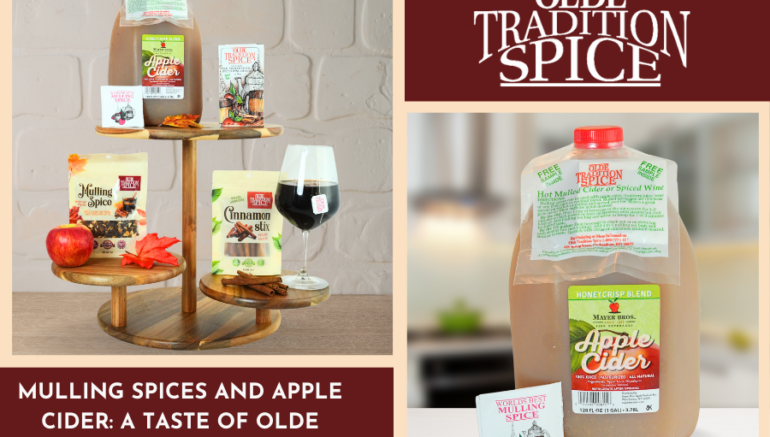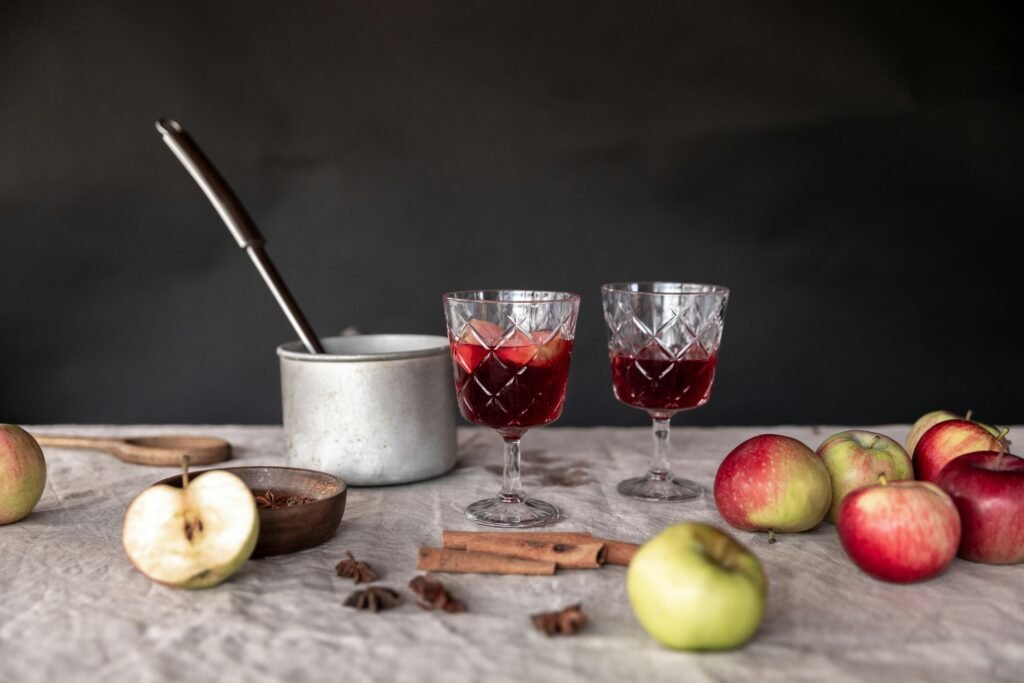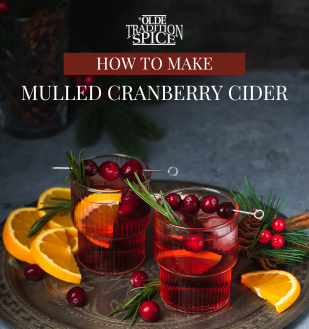
December 31, 2024
Nothing is more reassuring than enjoying a cup of mulled cider with mulling spices as the winter chill sets in and the holidays approach. Its sweet yet tart flavor and fragrant perfume recall memories and history; this age-old practice has long been a feature of seasonal celebrations all throughout the world.
The History of Mulled cider with Mulling Spices
Mulled cider with mulling spices is a traditional beverage from a time when survival depended on food preservation. People used spices like cinnamon, cloves, and allspice as necessary culinary aids and taste enhancers even before refrigeration became a standard practice. Their potent flavors could cover over less-than-fresh ingredients and improve the appeal of beverages.
In medieval Europe, particularly in England, mulled beverages – hot concoctions mixed with aromatic spices – were very popular. In these days, wine or ale would be heated and spiced to both warm the body and cover up the unappetizing flavor of older or less expensive wines. As this custom expanded throughout Europe, cider quickly emerged as a great alternative to wine in regions with a plentiful supply of apples.
Apple Cider: The Perfect Canvas for Mulling Spices
Apple cider is the perfect foundation for mulling spices because of its inherent sweetness and acidity. Since cider is inherently non-alcoholic, unlike wine or beer, it’s a great choice for the whole family.
Mulling cider has its roots in colonial America, when cider was a popular home beverage and apples were abundant. As a cozy winter beverage, early settlers would warm cider, add a blend of spices, and sip it. Because it was a tasty and affordable substitute for alcoholic beverages, this warming, spiced beverage was particularly well-liked during the holidays and around harvest.
As cider brewing techniques improved, so did the ways people enjoyed it. The mulled cider recipes of old often varied from region to region, but some spices and ingredients have stood the test of time.
Classic Mulling Spices and Their Flavors
Some spices are necessary for making mulling cider. Every spice adds a unique flair to produce a warm, cozy beverage that satisfies your hunger like no other.
* Cloves: Cloves add an aromatic punch with their slightly bitter taste and warm fragrance; just a few whole cloves can change the fragrance and flavor of mulled cider!
* Cinnamon: The foundation of any mulling spice blend, cinnamon adds an irresistibly warm note that is both sweet and slightly spicy—one we associate with cozy winter moments like drinking cider or baking festive holiday treats!
* Nutmeg: Nutmeg complements apple cider’s tart taste with a toasty, pleasant aroma. The traditional blend of soothing creaminess and mulled drinks has always included nutmeg.
* Allspice: A fragrant mixture of cloves, cinnamon, and nutmeg, allspice gives mulled cider a surprising depth of flavor by counterbalancing its sweet sweetness with a warm, peppery heat.
* Star anise: This exotic spice gives mulled cider a subtle licorice flavor and a striking visual impact. Its star-shaped pods float attractively in each boiling mug of cider, and its mild sweetness counterbalances more potent spices.
* Orange Peel: The zesty citrus flavor of orange peel counterbalances the heavy spices in this drink, giving it a revitalizing lift and bringing out the depth of flavors that would otherwise be missed. Its addition adds depth of flavor and pairs nicely with apple base flavors.
The Craft of Mulling Cider with Mulling Spice
It takes more than just combining spices and apple juice to make mulled cider; it’s an art form where each spice shines and harmonizes with the others. Use these guidelines to create the perfect mulled cider blend:
- Choose Your Cider: To get the best effects, sip fresh, unfiltered apple cider that hasn’t been processed or sweetened too much. This will allow the apples’ inherent acidity to come through.
- Make Your Own Spice Blend: Both pre-made and bespoke mulling spice blends are available; some recipes call for brown sugar or honey to provide extra sweetness.
- Avoid Boiling: Transfer the cider and spices to a big pot. Heat gently, giving the infusion 15 to 30 minutes; avoid boiling as this may change the aromas of the delicate spices and leave an overly bitter cider behind.
- Strain and Serve: Once the cider has had enough time to absorb all of its flavors from spices, strain out any solids before garnishing it with cinnamon sticks or slices of orange for extra flair.
Mulled Cider Revived
Mulled cider with mulling spices has been a popular custom for a long time. A sense of tradition, coziness, and connection are brought about by the increasing popularity of homemade and cozy drinks as a way to commemorate winter evenings, whether they are consumed by the fire, shared at holiday parties, or simply enjoyed by oneself at home.
Variations on a Classic
Although traditional mulling spices are still the most popular option, you may customize your mulled cider experience in a variety of ways. Ginger gives extra warmth and spice, vanilla beans add a smooth, creamy taste, and cranberries add festive flair and a tart counterpoint to the sweetness of the cider.
Create a visually attractive presentation by adding extra apple slices for flavor. You can also experiment with different spices and flavors to create a mulled cider with mulling spices recipe that is all your own while still paying homage to traditional spice blends.

Apple cider and mulling spices combine to create a sophisticated blend that evokes the joyous warmth and spirit of both past and present holiday seasons. Whether consumed alone for introspection, with friends and family, or as part of a social gathering among coworkers, muled beverages have long been utilized as a means of bringing people together via the sharing of comforting drinks and the celebration of life’s small joys. Mulled cider is not only a great way to stay cool as the weather cools off, but it’s also an unofficial holiday custom!






